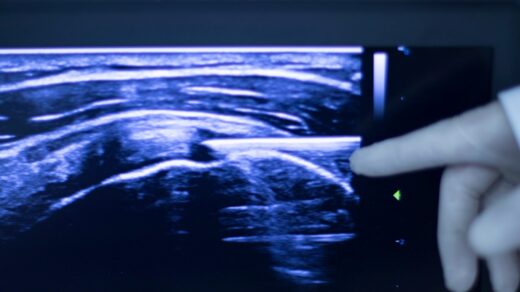
Diagnostic tools are an incredibly important component of modern-day healthcare. Diagnostic sonography can be utilized in a number of ways: monitoring fetal growth, evaluating the condition of soft tissues and organs, imaging the musculoskeletal system, and more.
Ultrasound imaging is associated with several benefits for the patient (painless, non-invasive, and low risk) and for the sonographer (highly portable, offers excellent visualization of soft tissues, is easy to use, etc.).
Below, International College of Health Sciences explains the utility and advantages of diagnostic sonography in more detail.
Applications of Diagnostic Sonography
Although ultrasound is most commonly associated with obstetrics, diagnostic sonography has a number of applications in other areas of healthcare as well.
Fetal Monitoring
Diagnostic sonography is best known for its uses in fetal monitoring. In addition to diagnosing pregnancy in the early stages, ultrasound is also used to monitor the growth of the fetus and watch for warning signs of health conditions as the baby develops.
Evaluating Soft Tissues and Organs
Organs and soft tissues are the prime targets of ultrasound imaging; the list includes blood vessels, the heart, the gall bladder, the kidneys, the spleen, the thyroid gland, breasts, testicles, and more.
Ultrasounds can identify any abnormalities in these organs and tissue groups to assist with a definitive diagnosis.
Investigating the Musculoskeletal System
Although some components of the musculoskeletal system cannot be imaged with ultrasound technology (such as healthy bones), diagnostic sonography can be very useful in musculoskeletal medicine. Muscles, tendons, nerves, and joints can all be investigated with the help of ultrasound.
Advantages of Diagnostic Sonography
Diagnostic sonography is an invaluable tool for medical professionals in all fields. It is associated with a long list of benefits for both the patient and the sonographer.
For the Patient
The list of benefits in relation to the patient experience includes:
- Painless: Mild discomfort may be experienced with the cold gel or gentle pressure, but in general, ultrasound is a painless experience for patients
- Non-Invasive: Unlike some other diagnostic tools, ultrasound imaging is non-invasive and requires no recovery time
- Low-Risk: Ultrasounds are associated with essential no risks. They don’t produce any harmful admissions (such as ionizing radiation from X-rays), and they don’t require any contrast agents that can trigger an allergic reaction and put the patient at risk

For the Sonographer
The medical professional who operates the ultrasound machine also benefits from this technology as a diagnostic tool. The advantages include:
- Portability: The machine can be moved easily from one patient room to the next
- Versatility: Ultrasound offers exceptional visualization of almost every organ and soft tissue area in the body
- Ease of Use: Training is required to read the images accurately, but the machine itself is very easy to use
- Speed: Ultrasound imaging can take only a couple of minutes, providing an exceptionally quick diagnosis in emergencies
Final Thoughts
Overall, diagnostic sonography is a highly utilized tool that can be applied to every region of the body in some capacity. It is also associated with a long list of benefits, both from a medical perspective and for the patient’s experience.



